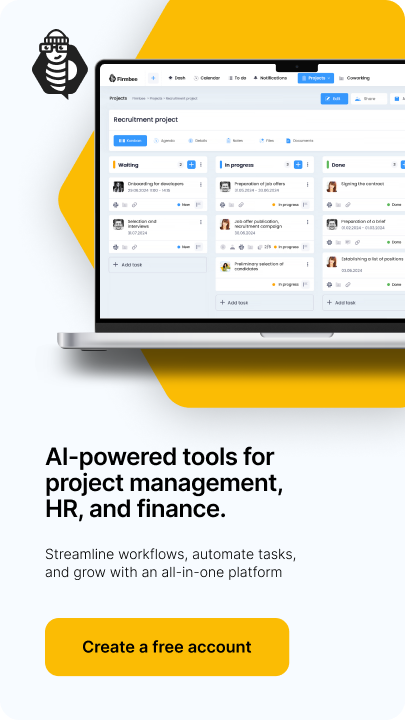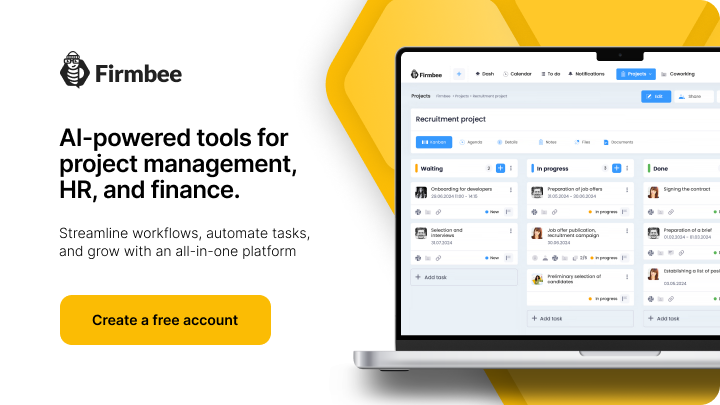Thanks to artificial intelligence, we will most likely soon be able to forget about using a keyboard. Why bother pasting individual letters when you can simply ask a question, show a problem in a picture, or even think of a task to perform? With new Intelligent User Interfaces (IUIs), the operation of other devices and machines will also become not only simpler but also faster. What are the business prospects of AI interaction methods for devices?
Human — AI interactions – table of contents:
- How do Intelligent User Interfaces (IUIs) work in case of AI interactions?
- Business applications of touch interfaces
- Gestures in three dimensions, virtual and augmented reality with AI interactions
- Voice-controlled devices and software - how to use them in your business?
- The future of AI interaction, or brain-machine interface
How do Intelligent User Interfaces (IUIs) work in case of AI interactions?
Intelligent User Interfaces (IUIs) are interfaces that use AI interactions techniques to enhance human experience with devices. IUIs can, for example, recognize a user’s speech or gestures, adapt to preferences based on analysis of past AI interactions, or assist in performing tasks. Indeed, the goal is to create an intuitive and natural way to communicate with electronic devices, or Natural User Interface (NUI). Although operating such an interface also requires learning, it is inherently facilitated, giving the feeling that everything is happening naturally and the interface itself is invisible.
Today, touch interfaces are the most widely applied and voice interfaces are the most developed. Promising future developments include gesture recognition in VR and AR, Smart Devices and brain-machine interfaces.
Examples of IUI applications concern intelligent voice assistants such as Siri or Alexa, which understand questions asked by voice and provide answers or follow commands. Other examples are IUIs that employ sensors to track body movement, gestures or gaze to control devices. They feature:
- Natural Language Processing (NLP) for understanding and creating speech,
- Image recognition (Computer vision) to interpret visual materials,
- Machine Learning (ML) to recognize patterns and predict user behavior.
You can apply machine learning, among other things, to interpret brain waves captured by smart headphones. This solution has been developed by Neurable to create headphones dedicated to work, which detect moments of focus and allow for the precise determination of the optimal time and conditions conducive to concentration. What’s more, during times of concentration, Neurable’s headphones automatically mute incoming calls, and allow you to skip to the next song you’re listening to with your thoughts.

Source: Neurable (https://neurable.com/headphones)
Business applications of touch interfaces
Touch interfaces are extremely popular because of their versatility. That’s why business has moved rapidly beyond the realm of smartphones and home appliance displays. They are increasingly common in ticket or snack vending machines, locks and airport gates.
Tapping, swiping, dragging, long-pressing – these are just some of the gestures that dominate our digital experience. With them, we can both type on a keyboard displayed on the screen, push buttons, and navigate through the movements of one or more fingers, or even the whole hand.
Using AI, touch devices have become more default, completing bits of movement not recognized correctly by the device. They combine data from the touch interface with gestures recognized by the camera, improving the fluidity of the user experience and imperceptibly enhancing the pleasure and safety of using the devices.
Three-dimensional gestures, virtual reality and augmented reality with AI interactions
Thanks to gesture recognition, we are increasingly operating with motion alone in touchless AI interactions with doors, bathroom sinks, or car screens. Automotive is also making its application widespread. BMW, for example, recently introduced a gesture control feature with a touchless display to handle the car’s volume, calls and other functions.
It is also worth noting the software for touchless operation of devices available in public places. On the market you can find:
- TouchFree – programming that enables companies to upgrade existing Windows-based kiosks and touchscreens to touchless gesture control,
- Banuba – a solution for gesture-based operation in space, such as selecting a product by pointing a finger or adding to a shopping cart with a thumbs-up gesture, which will be particularly handy in stores with augmented reality technologies, where you can try on virtual clothes, for example,

Source: Banuba (https://www.banuba.com/solutions/touchless-user-interface)
Indeed, AI interactions play a key role in gesture control in virtual reality (VR) and augmented reality (AR). AI features here to recognize body position and interpret movements and gestures of users, allowing them to interact naturally with virtual objects and environments with their hands or controllers. An example is the Oculus Quest 2, VR goggles equipped with cameras that track hand movements to intuitively control objects in the virtual world. VR and AR features in business for:
- training and simulations, where gesture control enables more natural and intuitive AI interaction,
- 3D model manipulation during design and engineering work, including in a team that is not located in a single physical space,
- shopping and e-commerce presentations – companies are using AR to create interactive shopping experiences where customers can use gestures to browse products and information.
One of the latest examples of applying AI interactions for gesture control in VR and AR is the Apple Vision Pro. It is a spatial computing device that has no hardware control mechanism. Instead, the Vision Pro relies on eye tracking and hand gestures to allow users to manipulate objects in the virtual space in front of them.
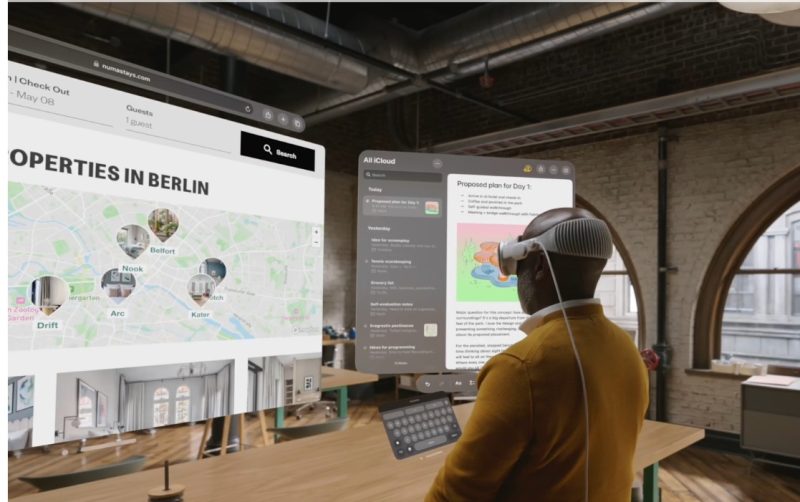
Source: Apple (https://www.apple.com/newsroom/2023/06/introducing-apple-vision-pro/)
Apple Vision Pro features gestures such as tap, double tap, pinch and drag, as well as two-handed gestures such as zoom and rotate. These gestures apply to various actions, such as selecting and manipulating objects, scrolling, moving windows and adjusting their size.
Voice control devices and software – how to use them in your business?
The growing role of artificial intelligence means that more and more devices and applications are also employing Voice User Interfaces (VUI). They have technologies that convert speech-to-text (STT) and text-to-speech (TTS).
Voice control is already very widely applied in business for:
- Customer service – the customer can talk to intelligent product and marketing voicebots, such as Inteliwise (Efecte),
- creating documents – for example, with Google Docs Voice Typing, which allows users to dictate text directly into a document,
- conducting international meetings – the voice interface enables you to translate your speech in real-time with an automatic translator, using Google Translate during Google Meet conversations, or using a dedicated tool such as Verbum.ai.
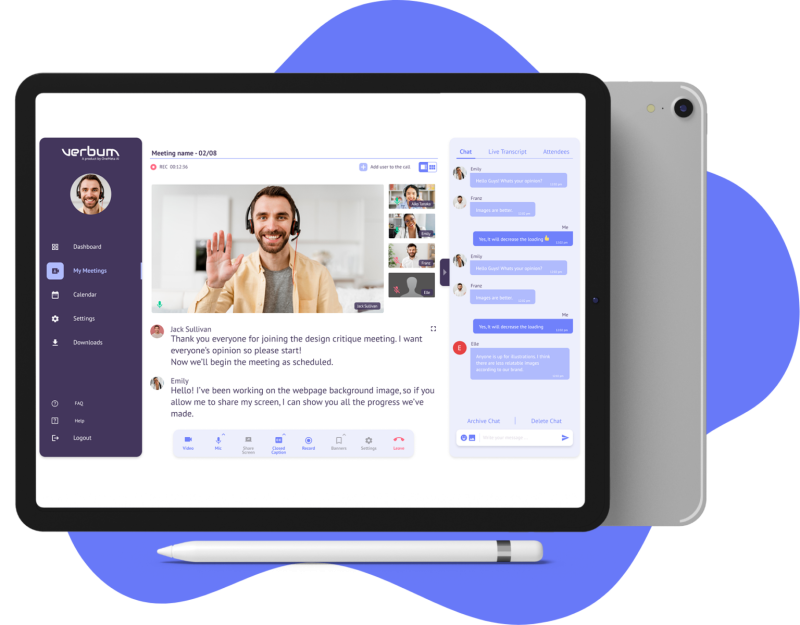
Source: Verbum.ai (https://verbum.ai/).
Many people also use voice control of the car’s software, for example, to set a navigation destination, and to control smart devices for controlling office lighting.
The future of AI interactions, or brain-machine interface
The ideal way to AI interactions with devices would be natural, that is, completely invisible to the user. And this is not pure fantasy. There are already prototypes of brain-machine interfaces that operate at unimaginable speeds akin to electronic telepathy.
The most advanced work on the brain-computer interface, or brain-computer interface (BCI) is being carried out by Neuralink. This is a company that is developing an interface called “The Link,” which is already in clinical testing.
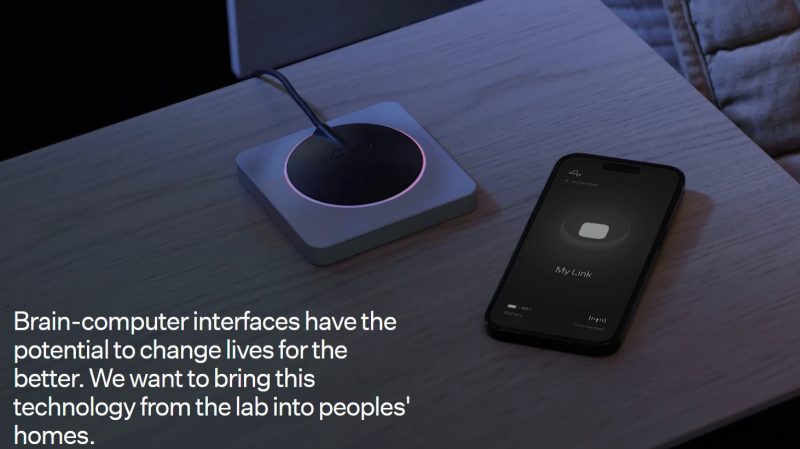
Source: Neuralink (https://neuralink.com/)
The Link is a coin-sized chip that is surgically implanted under the skull, where it connects to thin wires called neuronal threads that extend to different parts of the brain.
Neuronal strands contain electrodes that can record and stimulate brain activity, allowing neuronal signals to be decoded and encoded and sending information to and from a computer or mobile device.
The Link is implanted by a neurosurgical robot and then enables the control of an app that lets the user manipulate a keyboard and mouse with their thoughts.
Such forward-looking solutions, however, raise as many hopes as concerns. On the one hand, one will be able to simply think: “I want to post a note on social media about a company event with a portrait photo of the CEO taken during the opening of the meeting.” On the other hand – how do we make sure the connection is not eavesdropping on our private thoughts?

If you like our content, join our busy bees community on Facebook, Twitter, LinkedIn, Instagram, YouTube, Pinterest.
Author: Robert Whitney
JavaScript expert and instructor who coaches IT departments. His main goal is to up-level team productivity by teaching others how to effectively cooperate while coding.
AI in business:
- Threats and opportunities of AI in business (part 1)
- Threats and opportunities of AI in business (part 2)
- AI applications in business - overview
- AI-assisted text chatbots
- Business NLP today and tomorrow
- The role of AI in business decision-making
- Scheduling social media posts. How can AI help?
- Automated social media posts
- New services and products operating with AI
- What are the weaknesses of my business idea? A brainstorming session with ChatGPT
- Using ChatGPT in business
- Synthetic actors. Top 3 AI video generators
- 3 useful AI graphic design tools. Generative AI in business
- 3 awesome AI writers you must try out today
- Exploring the power of AI in music creation
- Navigating new business opportunities with ChatGPT-4
- AI tools for the manager
- 6 awesome ChatGTP plugins that will make your life easier
- 3 grafików AI. Generatywna sztuczna inteligencja dla biznesu
- What is the future of AI according to McKinsey Global Institute?
- Artificial intelligence in business - Introduction
- What is NLP, or natural language processing in business
- Automatic document processing
- Google Translate vs DeepL. 5 applications of machine translation for business
- The operation and business applications of voicebots
- Virtual assistant technology, or how to talk to AI?
- What is Business Intelligence?
- Will artificial intelligence replace business analysts?
- How can artificial intelligence help with BPM?
- AI and social media – what do they say about us?
- Artificial intelligence in content management
- Creative AI of today and tomorrow
- Multimodal AI and its applications in business
- New interactions. How is AI changing the way we operate devices?
- RPA and APIs in a digital company
- The future job market and upcoming professions
- AI in EdTech. 3 examples of companies that used the potential of artificial intelligence
- Artificial intelligence and the environment. 3 AI solutions to help you build a sustainable business
- AI content detectors. Are they worth it?
- ChatGPT vs Bard vs Bing. Which AI chatbot is leading the race?
- Is chatbot AI a competitor to Google search?
- Effective ChatGPT Prompts for HR and Recruitment
- Prompt engineering. What does a prompt engineer do?
- AI Mockup generator. Top 4 tools
- AI and what else? Top technology trends for business in 2024
- AI and business ethics. Why you should invest in ethical solutions
- Meta AI. What should you know about Facebook and Instagram's AI-supported features?
- AI regulation. What do you need to know as an entrepreneur?
- 5 new uses of AI in business
- AI products and projects - how are they different from others?
- AI-assisted process automation. Where to start?
- How do you match an AI solution to a business problem?
- AI as an expert on your team
- AI team vs. division of roles
- How to choose a career field in AI?
- Is it always worth it to add artificial intelligence to the product development process?
- AI in HR: How recruitment automation affects HR and team development
- 6 most interesting AI tools in 2023
- 6 biggest business mishaps caused by AI
- What is the company's AI maturity analysis?
- AI for B2B personalization
- ChatGPT use cases. 18 examples of how to improve your business with ChatGPT in 2024
- Microlearning. A quick way to get new skills
- The most interesting AI implementations in companies in 2024
- What do artificial intelligence specialists do?
- What challenges does the AI project bring?
- Top 8 AI tools for business in 2024
- AI in CRM. What does AI change in CRM tools?
- The UE AI Act. How does Europe regulate the use of artificial intelligence
- Sora. How will realistic videos from OpenAI change business?
- Top 7 AI website builders
- No-code tools and AI innovations
- How much does using AI increase the productivity of your team?
- How to use ChatGTP for market research?
- How to broaden the reach of your AI marketing campaign?
- "We are all developers". How can citizen developers help your company?
- AI in transportation and logistics
- What business pain points can AI fix?
- Artificial intelligence in the media
- AI in banking and finance. Stripe, Monzo, and Grab
- AI in the travel industry
- How AI is fostering the birth of new technologies
- The revolution of AI in social media
- AI in e-commerce. Overview of global leaders
- Top 4 AI image creation tools
- Top 5 AI tools for data analysis
- AI strategy in your company - how to build it?
- Best AI courses – 6 awesome recommendations
- Optimizing social media listening with AI tools
- IoT + AI, or how to reduce energy costs in a company
- AI in logistics. 5 best tools
- GPT Store – an overview of the most interesting GPTs for business
- LLM, GPT, RAG... What do AI acronyms mean?
- AI robots – the future or present of business?
- What is the cost of implementing AI in a company?
- How can AI help in a freelancer’s career?
- Automating work and increasing productivity. A guide to AI for freelancers
- AI for startups – best tools
- Building a website with AI
- OpenAI, Midjourney, Anthropic, Hugging Face. Who is who in the world of AI?
- Eleven Labs and what else? The most promising AI startups
- Synthetic data and its importance for the development of your business
- Top AI search engines. Where to look for AI tools?
- Video AI. The latest AI video generators
- AI for managers. How AI can make your job easier
- What’s new in Google Gemini? Everything you need to know
- AI in Poland. Companies, meetings, and conferences
- AI calendar. How to optimize your time in a company?
- AI and the future of work. How to prepare your business for change?
- AI voice cloning for business. How to create personalized voice messages with AI?
- Fact-checking and AI hallucinations
- AI in recruitment – developing recruitment materials step-by-step
- Midjourney v6. Innovations in AI image generation
- AI in SMEs. How can SMEs compete with giants using AI?
- How is AI changing influencer marketing?
- Is AI really a threat to developers? Devin and Microsoft AutoDev
- AI chatbots for e-commerce. Case studies
- Best AI chatbots for ecommerce. Platforms
- How to stay on top of what's going on in the AI world?
- Taming AI. How to take the first steps to apply AI in your business?
- Perplexity, Bing Copilot, or You.com? Comparing AI search engines
- ReALM. A groundbreaking language model from Apple?
- AI experts in Poland
- Google Genie — a generative AI model that creates fully interactive worlds from images
- Automation or augmentation? Two approaches to AI in a company
- LLMOps, or how to effectively manage language models in an organization
- AI video generation. New horizons in video content production for businesses
- Best AI transcription tools. How to transform long recordings into concise summaries?
- Sentiment analysis with AI. How does it help drive change in business?
- The role of AI in content moderation




